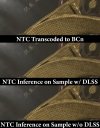There's literally no way of knowing and no-one should be pointing the finger of blame without any factual basis like some World Leader. Maybe MS created an API that can't work with nVidia and it's on MS? Maybe the API is great and nVidia just didn't implement it right? Maybe the API was following guidance from the IHVs but it turns out there was an issue overlooked by both sides and now they have to find some workaround?
Anyone stoically voicing who's fault it is without any insight whatsoever is talking faith, not science/engineering.
Please elevate the discussion to possible reasons why one GPU vendor is performing worse, ideally with comparing archs and software stacks to identify the differences. If that's not possible as the technical understanding is inadequate, just leave it at what it is until we know more actual facts.
Anyone stoically voicing who's fault it is without any insight whatsoever is talking faith, not science/engineering.
Please elevate the discussion to possible reasons why one GPU vendor is performing worse, ideally with comparing archs and software stacks to identify the differences. If that's not possible as the technical understanding is inadequate, just leave it at what it is until we know more actual facts.

